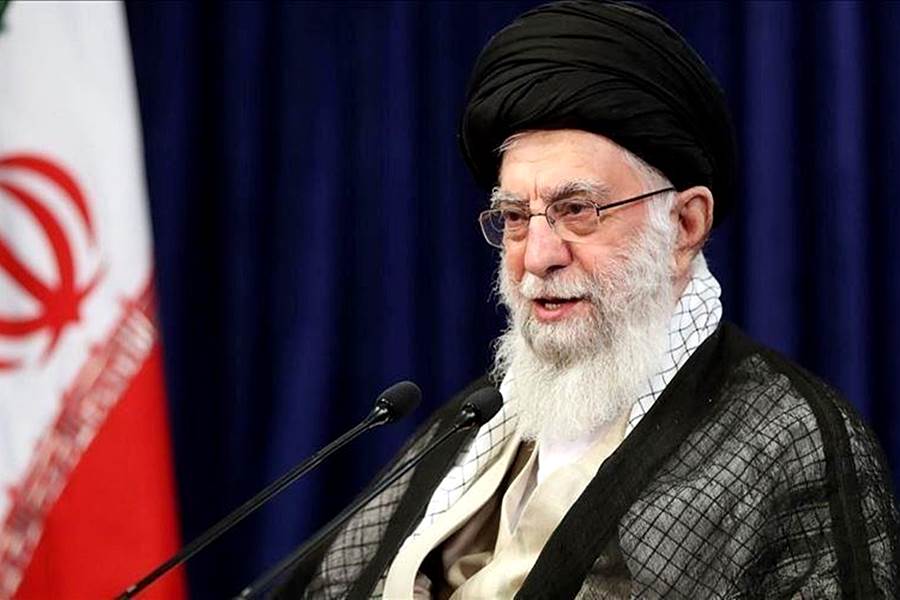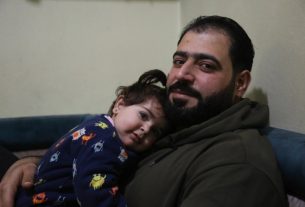Mon 03 October 2022:
Iran’s supreme leader, Ayatollah Ali Khamenei, has blamed the United States and Israel for protests that have gripped the country for more than two weeks, accusing the countries of trying to stop Iran’s “progress”.
Khamenei on Monday branded the anti-government protests, some of the biggest the country has seen in years, as “riots”.
The 83-year-old leader had remained silent on the protests, which erupted after a 22-year-old Kurdish woman, Mahsa Amini, died last month in the custody of Iran’s morality police.
“I say explicitly that these riots and this insecurity were a design by the US and the occupying, fake Zionist regime [Israel] and those who are paid by them, and some traitorous Iranians abroad helped them,” Khamenei told graduating cadets at a police university in Tehran.
“In the accident that happened, a young woman passed away, which also pained us, but reactions to her death before investigations [take place] … when some come to make the streets insecure, burn Qurans, take hijabs off covered women, and burn mosques and people’s cars – they’re not a normal, natural reaction,” Khamenei said while surrounded by the chiefs of the police, army and the Islamic Revolutionary Guard Corps (IRGC).
Khamenei sought to further cast the unrest as part of a foreign effort to destabilise Iran, saying another “excuse” would have been found to destabilise the country if it were not for Amini’s death.
“They feel that the country is progressing towards full-scale power and they can’t tolerate this,” Khamenei said.
The US is said to be considering further sanctions on Iran in light of the protests, which have led to the deaths of dozens of people. It has eased some internet sanctions on Iran to try to help Iranians circumvent government restrictions on the internet imposed since the protests began.
Ethnic tension
In his speech, Khamenei alluded to unrest among Iran’s ethnic Kurdish and Baluch populations but argued that Iran would not be divided along ethnic lines.
“I have lived among ethnic Baluchis and they are deeply loyal to the Islamic Republic,” Khamenei said. “The ethnic Kurds are also among one of the most advanced groups in Iran who love their homeland, Islam and the establishment.”
A September 28 attack on northern Iraq by the IRGC, which used missiles and drones, killed at least 13 people.
In the southeastern province of Sistan and Baluchistan, a deadly shoot-out killed at least 20 people in the city of Zahedan last week.
Authorities said the firefight came after members of a “terrorist” secessionist group launched an attack that also killed several IRGC and Basij paramilitary members.
Meanwhile, a number of female protesters have been filmed burning their hijabs or cutting their hair, making the hijab one of the main themes of the protests.
“Many of the people who don’t have complete hijab are among the serious supporters of the Islamic Republic and participate in various events. The issue is over the independence, resilience, strengthening and the power of Islamic Iran,” the supreme leader said.
As for the protesters themselves, Khamenei painted many of them as misguided – and said they could be made to understand that they had made a “mistake” by “punishing” them, without elaborating.
Comments by leading athletes and artists in support of the protests also attracted Khamenei’s attention, with the Iranian supreme leader saying that those who had spoken out represented only a minority of Iran’s sports and artistic community.
At least two footballers and a musician who expressed support for the protests were arrested last week.

SOURCE: AL JAZEERA
___________________________________________________________________________________________________________________________________________
FOLLOW INDEPENDENT PRESS:
TWITTER (CLICK HERE)
https://twitter.com/IpIndependent
FACEBOOK (CLICK HERE)
https://web.facebook.com/ipindependent
Think your friends would be interested? Share this story!





